How to Install and Configure pfSense on X86-64bit Win10 Mini PC?
Feel free to let us know what tests, tutorials, and resources you want to know more about Odyssey X86J4105. We will keep updating more content around this amazing board. Stay tuned and look forward to all of your suggestions!
Note: We will keep update all resource for ODYSSEY X86J4105 on the blog of Resource Roundup for ODYSSEY – X86J4105: A Windows 10 Mini PC also Supports Linux OS to help you get more familiar with this brand new mini PC. Stay tuned:)

pfSense is an open-source firewall and router platform based on FreeBSD. pfSense is usually installed on a physical PC computer or a virtual machine to make a dedicated firewall for the network. pfSense is equipped with a Web user to interface for management tasks such as setting up and updating.
FreeBSD is a UNIX-like operating system. FreeBSD provides comprehensive support for computer systems with different levels and architectures. There were a lot of original BSD UNIX developers decided to switch to the development of FreeBSD, which makes FreeBSD have great compatibility with UNIX in internal structure and system API in the community.
The pfSense firewall is ideally installed on X86-architecture based PCs and virtual machines. This article will briefly introduce the pfSense installation and configuration process including:
- Download the pfSense OS Image
- Detailed steps of pfSense deployment process
- Initial configuration of pfSense firewall
First, let us take a look at the advantages of pfSense before we move on to the installation and configuration.
Why choose pfSense?
In regards to the pfSense firewall solution, it not only has the basic status monitoring packet filtering function provided by the regular firewall, but also supports important functions such as NAT mode deployment, dual-machine hot backup, load balancing, and VPN. In terms of management and maintenance, pfSense supports performance viewing and report generation, and can also be managed centrally via SNMP.
In addition to the basic functions of a broadband router, pfSense has the following features:
- pfSense can adapt to the requirements of all-weather operation based on stable and reliable FreeBSD OS.
- Developers can use Web page authentication through user authentication function provided by pfSense.
- pfSense uses the web management interface for the configuration (supports SSL), supporting remote management and automatically upgrading the software versions.
- pfSense provides complete firewall, flow control, and data packet functions to ensure the security, stability and high-speed operation of the network.
- pfSense supports multiple WAN lines and load balancing functions, which can greatly increase the network outlet bandwidth and automatically distribute the load when the bandwidth is congested
- pfSense supports the 802.1Q VLAN standard, which can make the common network card to recognize the 802.1Q tag through software simulation and provide services for users of multiple VLANs at the same time.
- pfSense has built-in IPsec and PPTP VPN, remote users can securely access the intranet
- pfSense supports the use of additional software packages to expand more functions and provide users with more functions
Let’s get started! Install and Configure pfSense on your X86-64bit Win10 Mini PC!
Hardware Requirements
- A Working Computer / Odyssey X86J4105 (x86 64 bit Win10 Mini PC)
- USB Drive x 2 (<8GB is recommended)
- A Monitor
- Keyboard
- Internet & Ethernet Cable
Step 1: Download the pfSense OS Image
First, download the pfSense OS Image into your drive.

If you are using the ODYSSEY-X86J4105, choose the settings as above and click download.
Step 2: Creating a Bootable USB
Prepare your Bootable USB
Firstly, format one of the USB drive. If you are a Windows user, you can format the USB drive by right-clicking the USB Drive and select Format.
Note: Choose FAT32 for the File System.
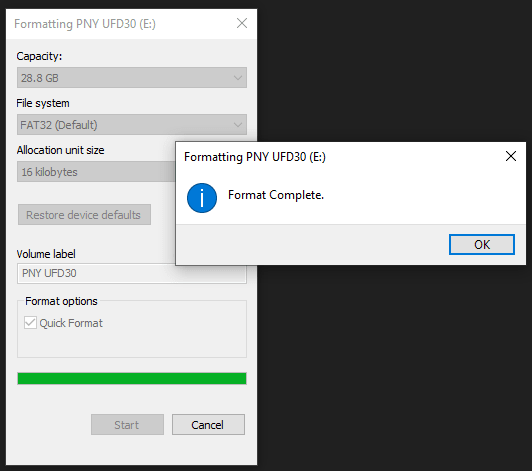
Download Flash Burner
Secondly, download the Open Source Flash burner balenaEtcher. Download the version according to your operating system(Windows/macOS/Linux) to flash the OS image onto the USB.
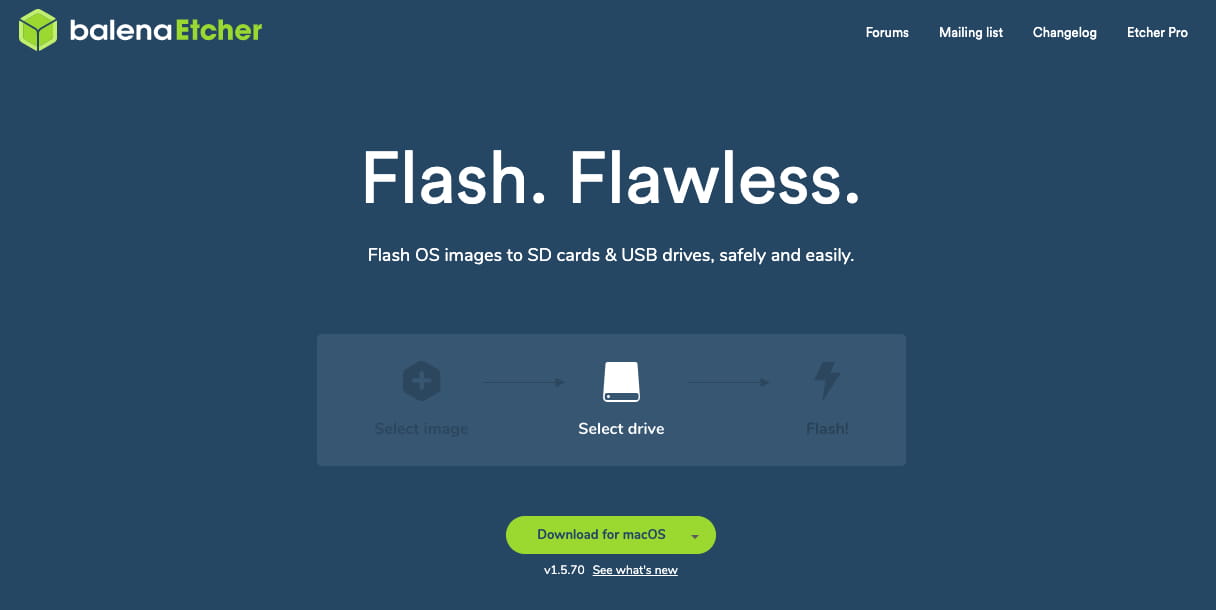
Writing the OS Image into USB
Select the downloaded Operating System Image, select the formatted USB Drive and Flash! Now, the bootable USB is all set to go.
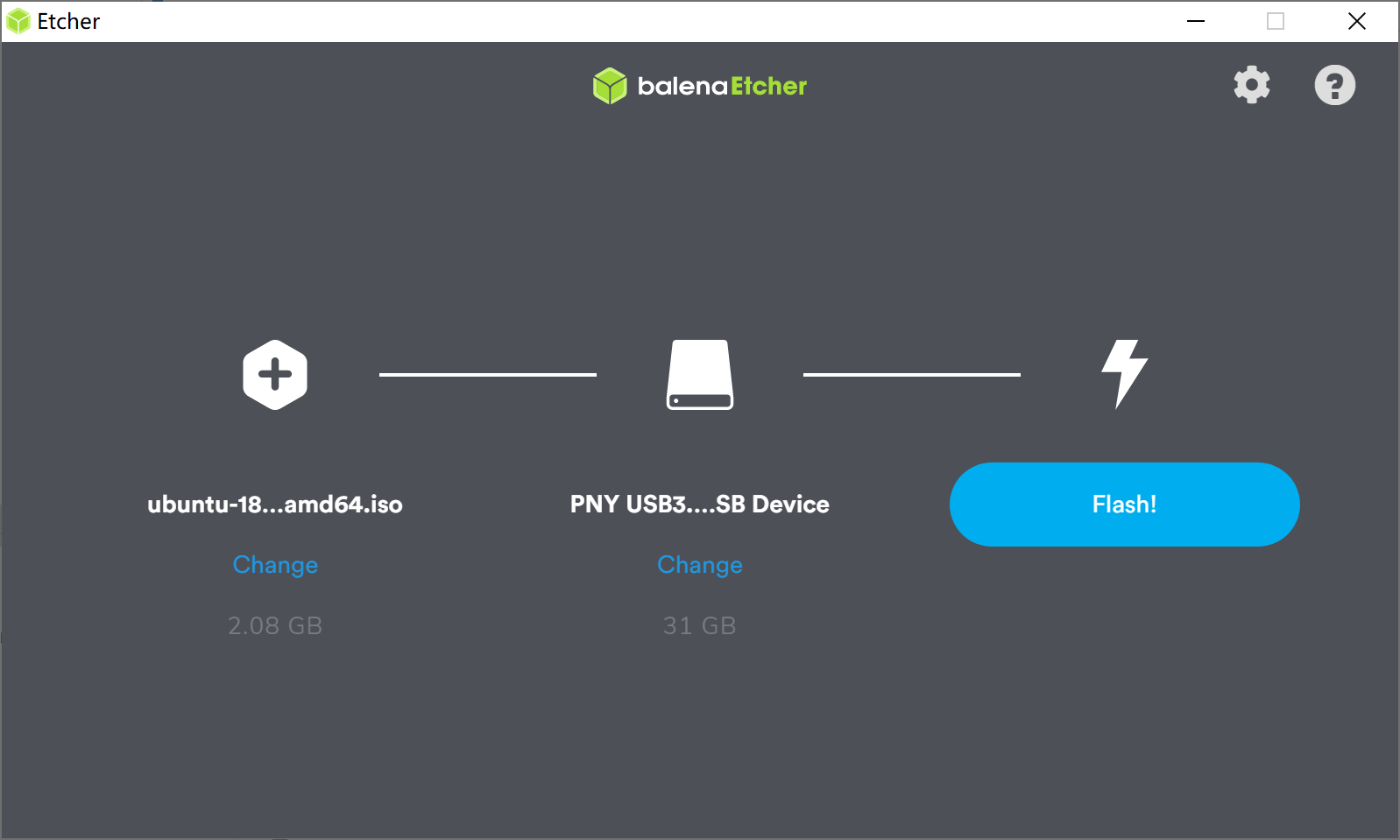
Note: If a warning states that it does not contain a partition table appear, you can simply click continue to ignore the message.
Step 3: Installing the pfSense OS
Enabling CSM Mode in ODYSSEY – X86J4105¶
For this step, you will need to first plug in your bootable USB, Monitor and keyboard to ODYSSEY – X86J4105 or your computer and power it up. When booting up, keep pressing DEL key to enter the setup screen. Navigate to Advanced -> CSM Support and press Enter to enable it.
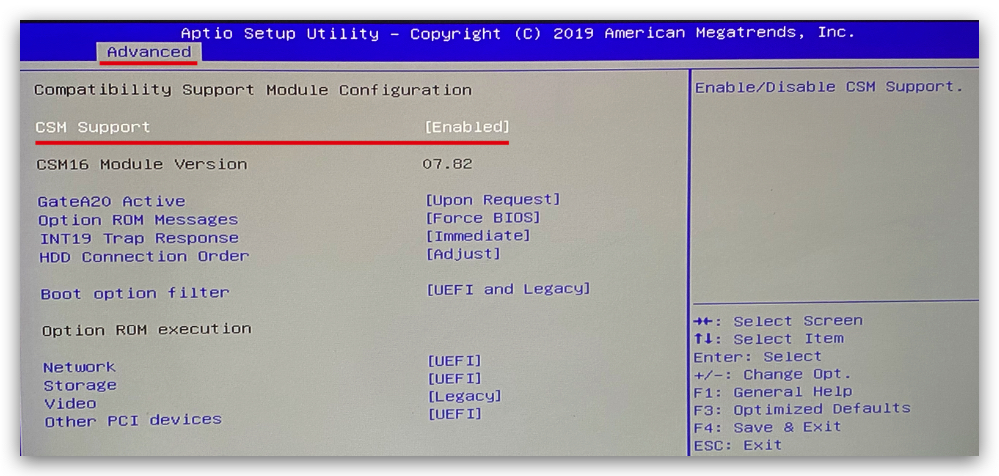
Install the OS
Next, reboot your computer or ODYSSEY – X86J4105 and keep pressing F7 to enter the boot manager screen. Select the bootable USB (Installer) and press Enter.
Note: Remember to choose the one that has the pfSense iso image on it.
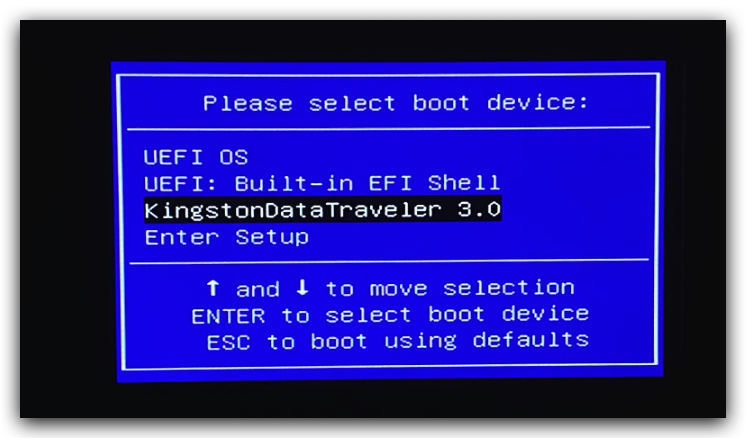
Installing process
Now we will proceed to the installing process. A boot screen like above should appear. Press Enter to select the Boot Multi User (pfSense Installer).

Enters the Installer, and press Enter to accept.

An options menu should appear as follow, select Install and press Enter.

Now, choose the correct keymap for your keyboard, or just select Continue with default keymap and press Enter.
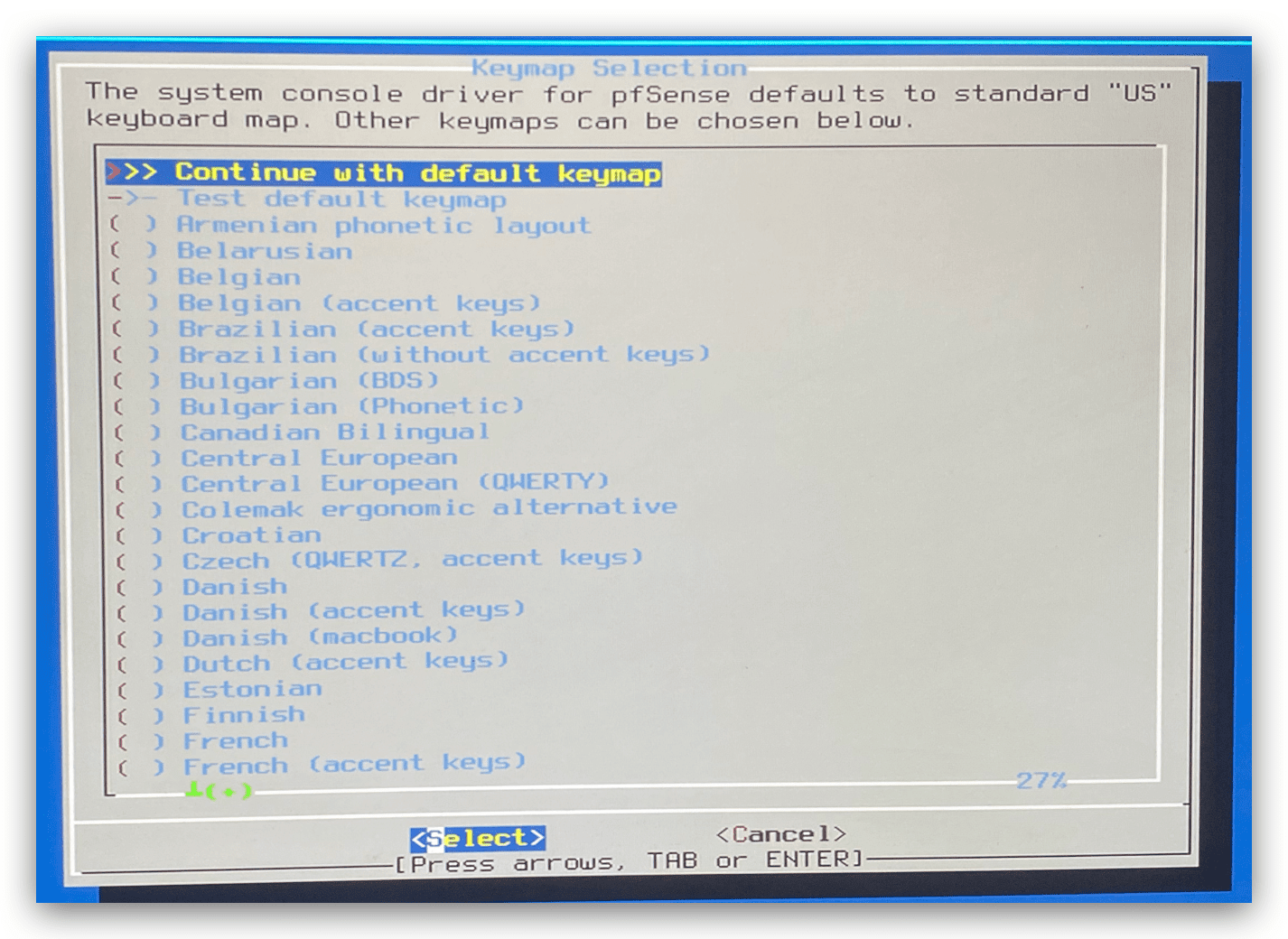
Here you can choose Auto to automatically install the pfSense on to the ODYSSEY-X86J4105 / computer, but it’s better to use Manual to choose exactly where you want to install the pfSense.
Note: In this tutorial, pfSense is installed onto a USB drive for convenience. Hence another good reason to choose Manual other than Auto.
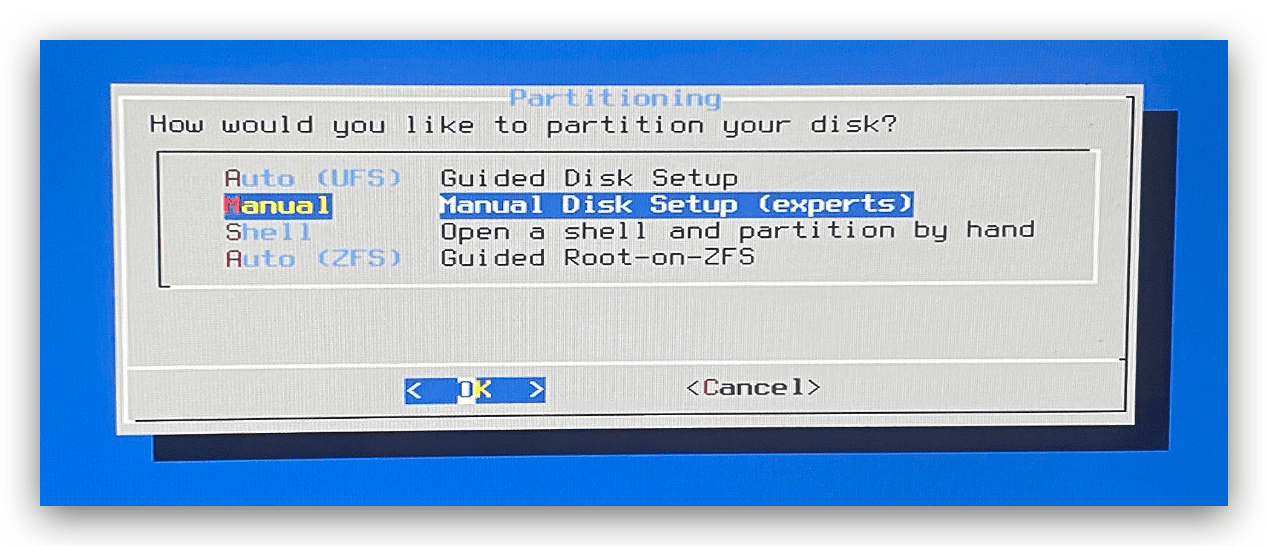
Here you can see all the hard drives as well as the partitions here. Choose the hard drive that you want to install pfSense on. Select the hard drive using arrow keys. Here, da1 is my second USB drive and will be used to install pfSense. Select Auto here to automatic partition for pfSense in this hard drive.
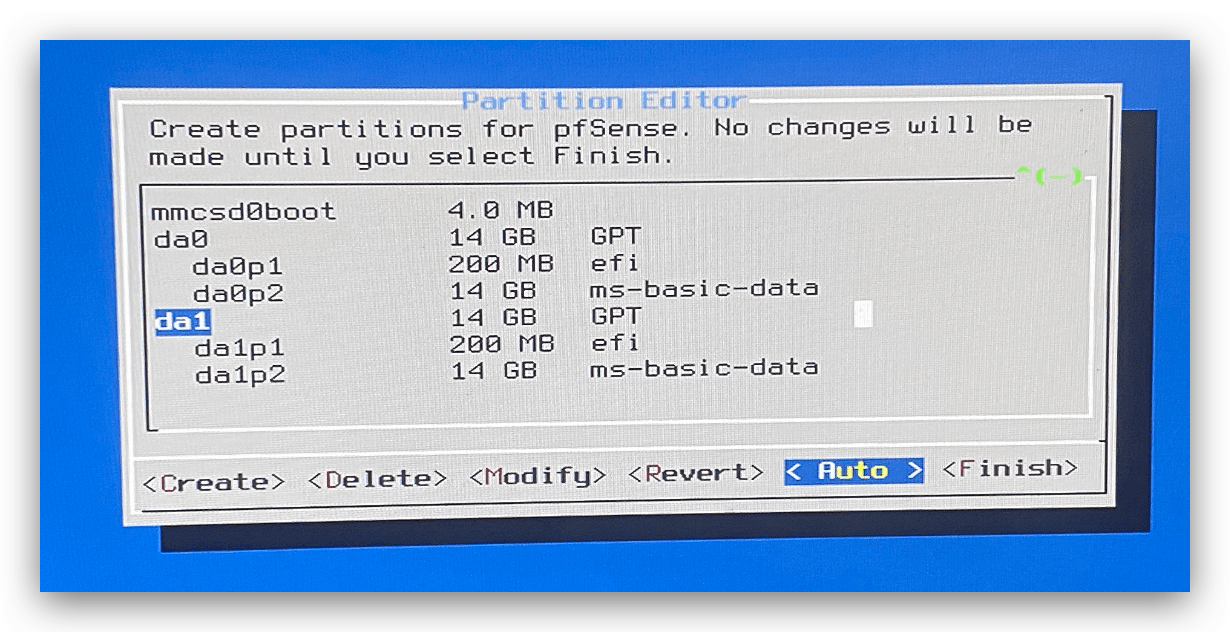
Under the correct hard drive, select OK.
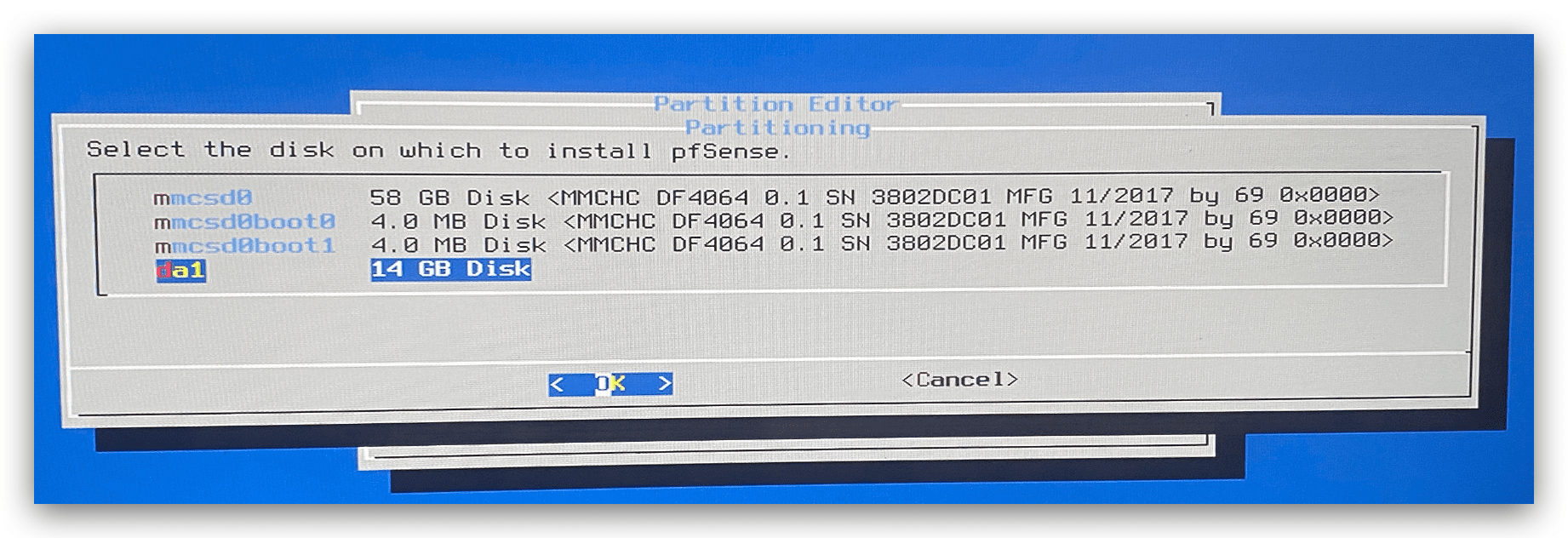
Now, the installation process will take place.
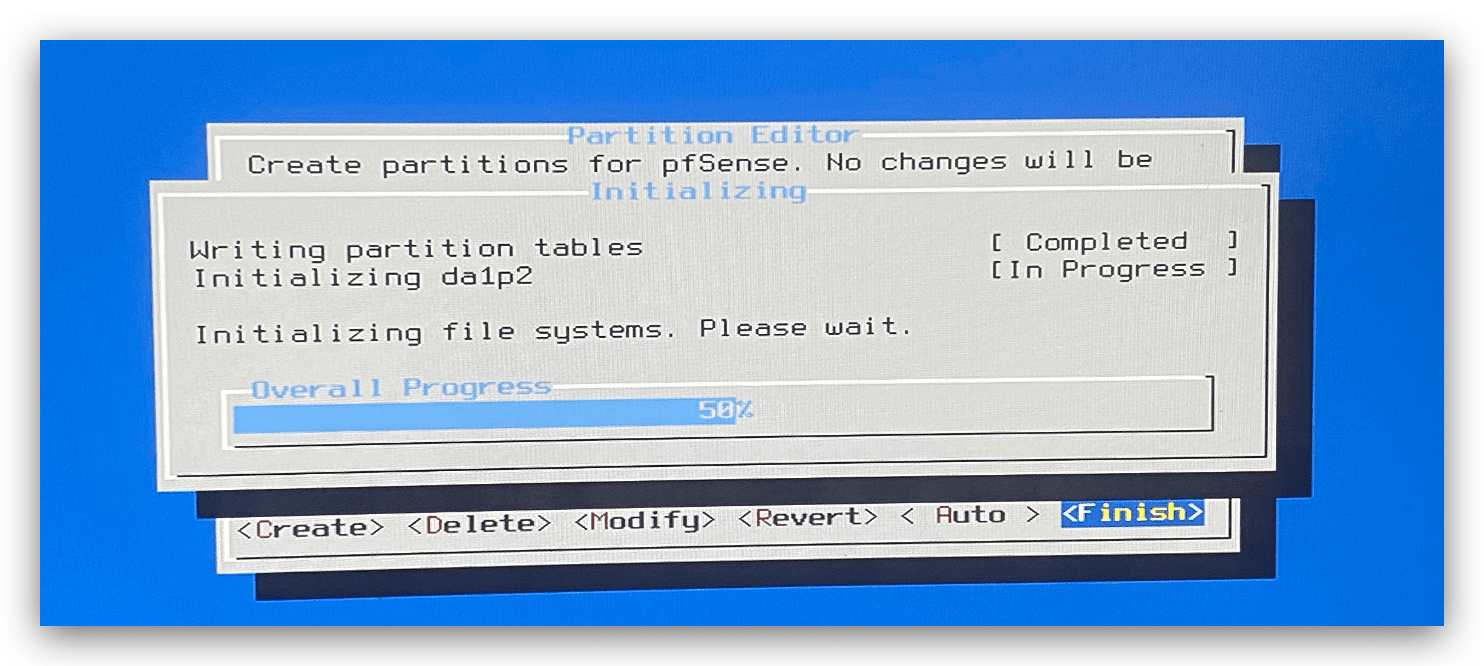
After installing, the following window will appear, select No.
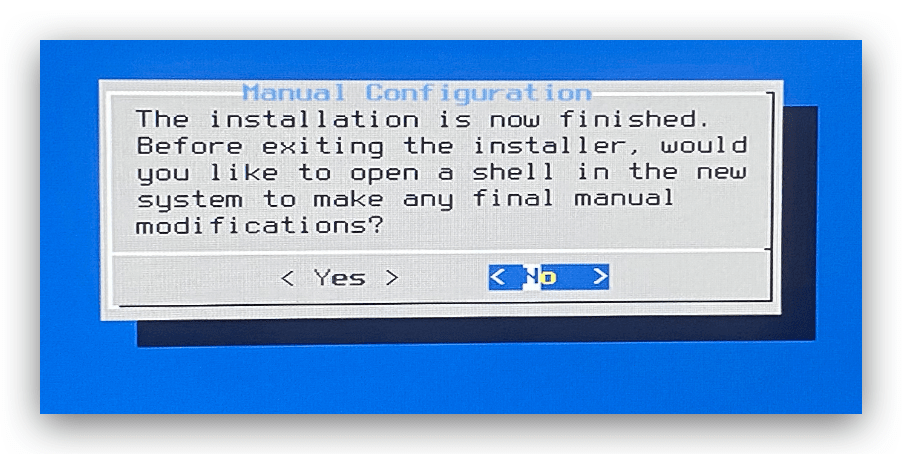
Lastly, select Reboot and pfSense is successfully installed!
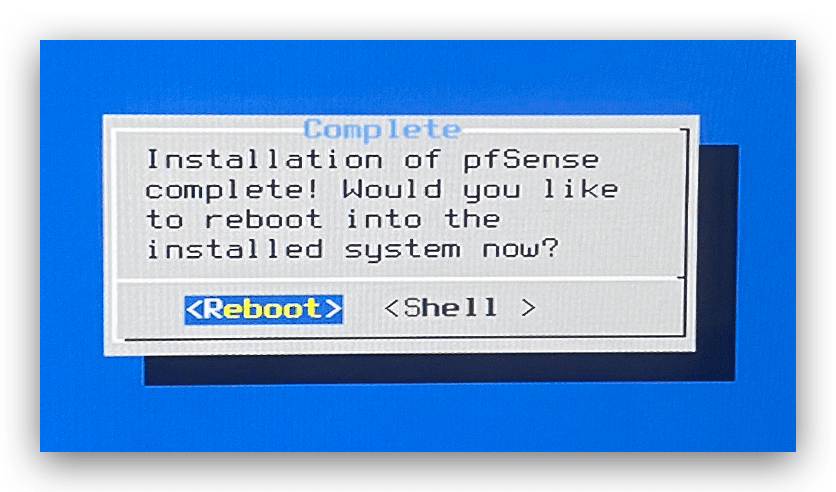
Configurations of pfSense
Next we will move on to configure pfSense.
Firstly, reboot your ODYSSEY-X86J4105 / computer, and choose the correct hard drive to boot pfSense OS. Plug in a ethernet cable into one of Ethernet ports from ODYSSEY-X86J4105 / computer. The pfSense should be booted properly and shows the following screen.
Note: If you see LAN already configured, you can choose 1 to assign interfaces and choose the right port for WAN and get rid of LAN. For example, in the below picture, LAN is removed for now.
Alongside with the WAN, you should see an IP assigned to the device, and this IP will be used later. Now you can try to log on the Web GUI using another PC connected in the same network!
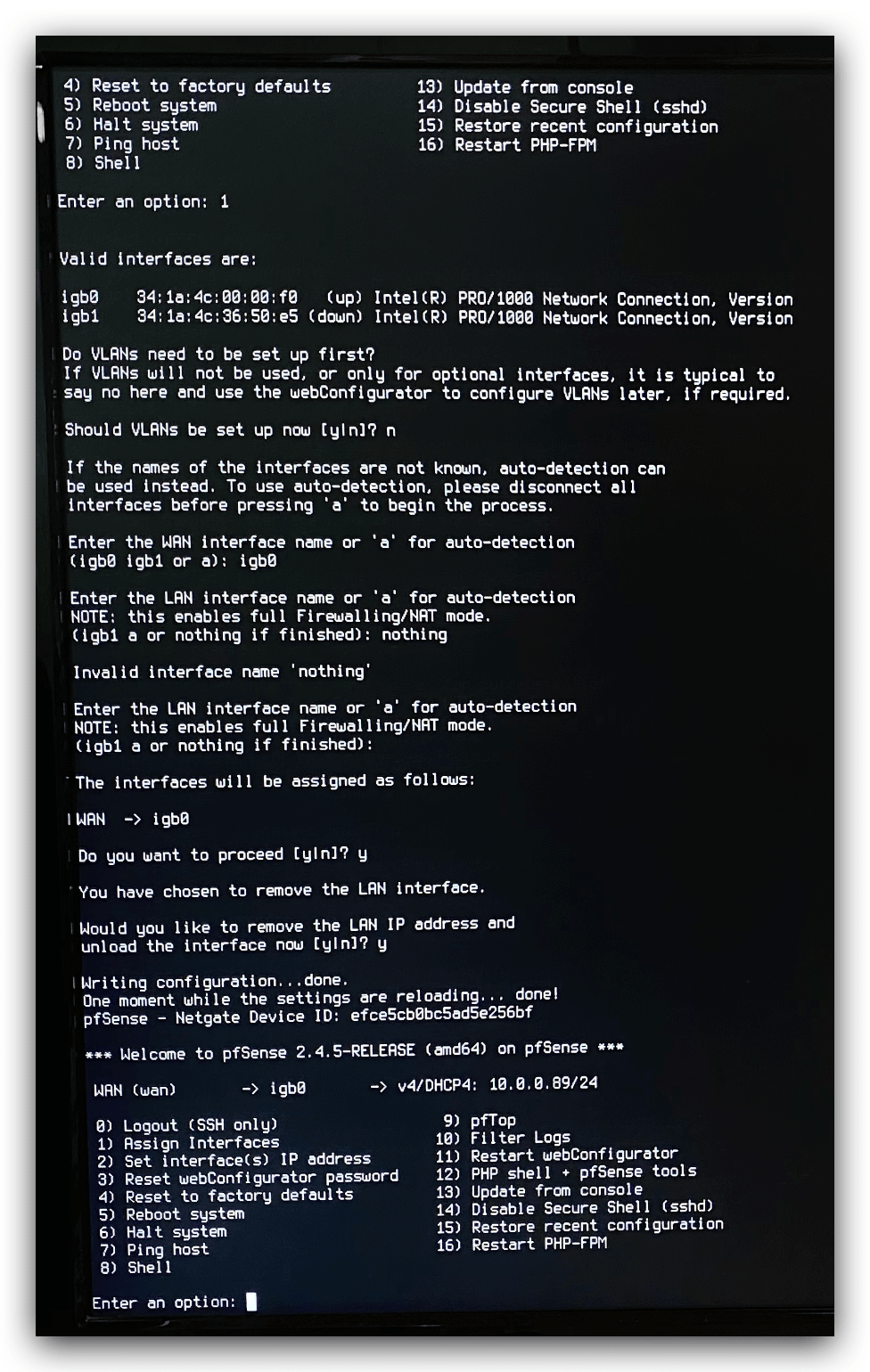
Changing pfSense WebGUI protocol (optional)
For some reason, pfSense uses https protocol for Web GUI and may cause failure when logging to the Web GUI. If you failed to log in to Web GUI, follow this to change the https protocol to http protocol.
Choose 8 to enter shell in pfSense. Type the following to configure:
viconfig
A config file as shown will appear and find <webgui> session and change the https protocol to http.
Note: this is using vim editor, use x key from keyboard to delete. Then, press Esc and type :wq! to save and quit and changes.
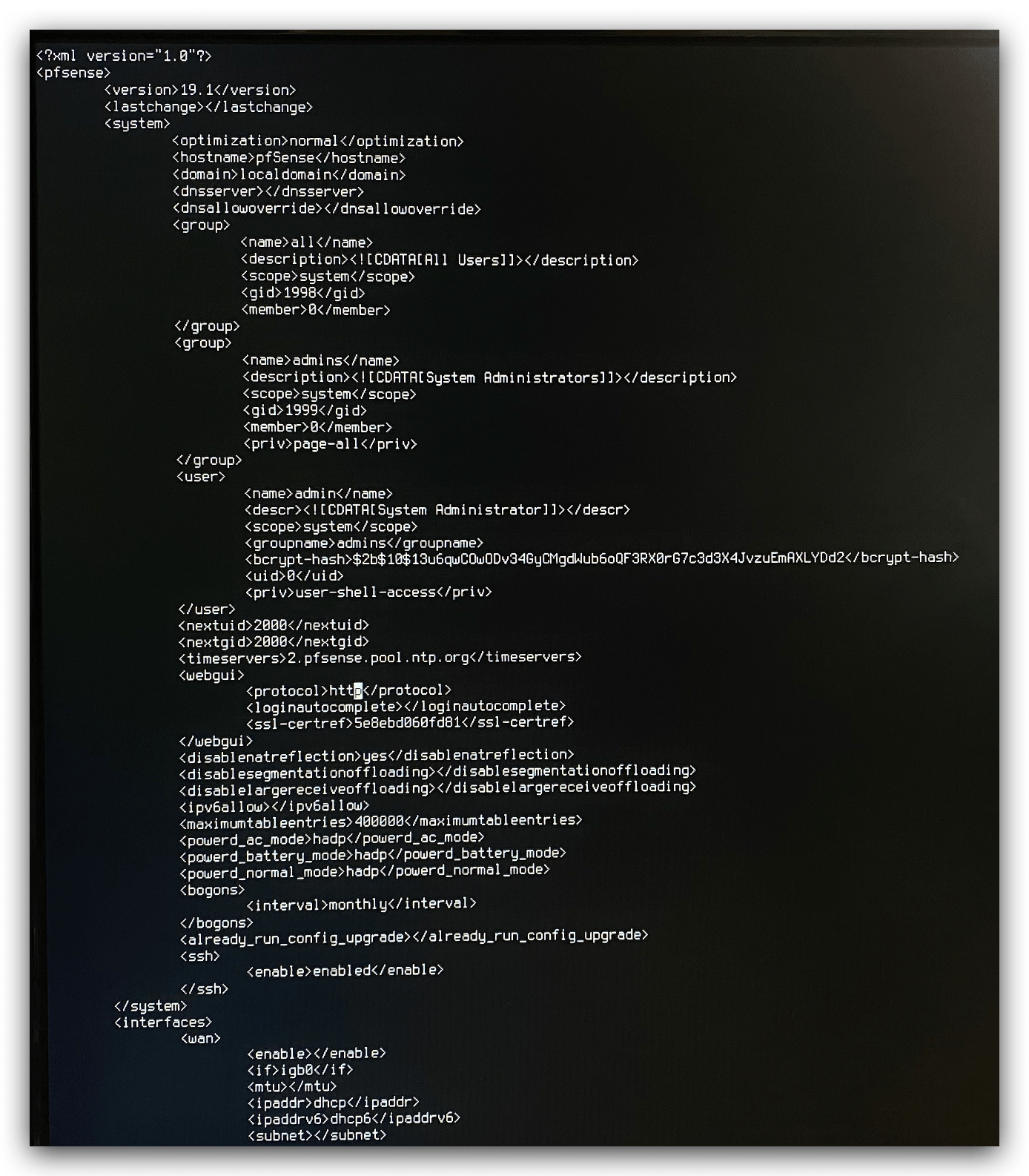
Now, try to log in pfSense Web GUI using the IP address again.
pfSense Web GUI Configurations
Now you can log into the pfSense Web GUI from another PC using the IP address shown before.
Note: default login is admin and default password is pfsense
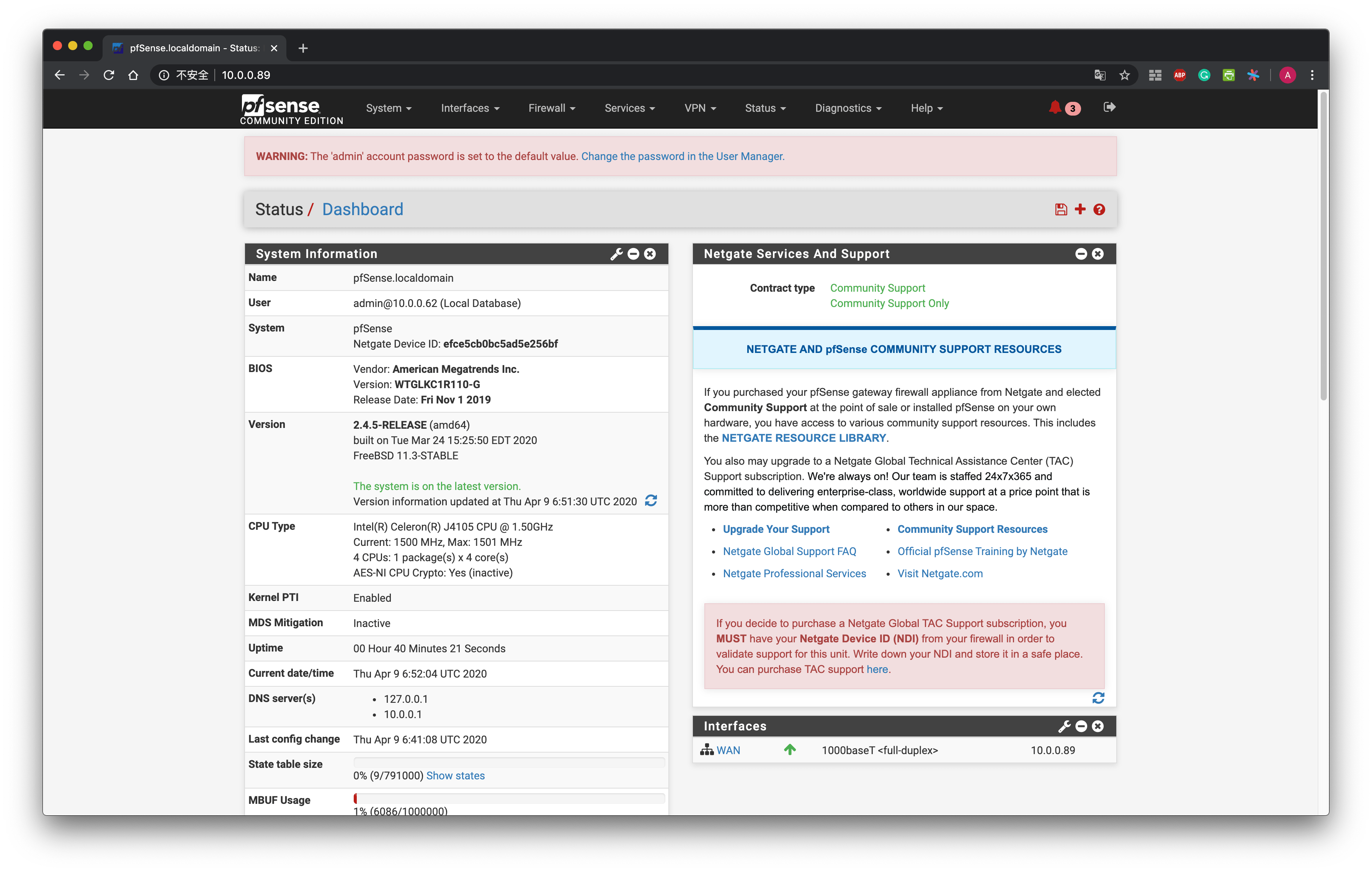
Now you can easily manage your pfSense running on ODYSSEY-X86J4105 / computer!
Installing packages
Lastly, to install packages, you can simply navigate to System -> Package manager and search for the packages that you like!

For more about pfSense, please also visit the official pfSense Forum!
Resources
Wonder what this ODYSSEY X86J4105 is all about? Lets take a look:
Introducing the Odyssey X86J4105
Edge Computing devices are playing an increasingly important role in the field of IoT. Nowadays, a computer is not just a big rectangular black box under the desk, or a small portable device working on your knees. Computers are ubiquitous devices that span calculating, communicating, and data storage. Based on this definition, here we would like to introduce our new product – the ODYSSEY – X86J4105, a x86 64bit mini PC that can run Win10!
ODYSSEY is a series of SBC (Single Board Computer), allowing you to build Edge Computing applications with ease. Just simply connect to a mouse, keyboard and a monitor with the Odyssey -X86J4105, you will get a powerful Mini PC that can run Windows and Linux OS onboard.
Feel free to let us know what tests, tutorials, and resources you want to know more about Odyssey X86J4105. We will keep updating more content around this amazing board. Stay tuned and look forward to all of your suggestions!
Want to find out more about the Odyssey X86J4105? You can take a look at Onboard Interfaces of Odyssey X86J4105 and see how powerful it is.



